8 countries with the most number of lakes
- 2 Comments
- by kamblenayan826
- Blog

8 countries with the most number of lakes
Lakes are important for Earth’s ecosystems which serve as freshwater reservoirs, support biodiversity, and offer recreational spaces. Some countries are very rich in these water bodies due to their broad landscapes and climatic conditions. Let’s have a look at some of the countries which have the most number of lakes across the world.
What Country has the Most Lakes?
5 Countries with the Most Lakes
Russia
| Canada | 879,800 | |
| Russia | 201,200 | |
| Finland | 188,000 | |
| United States | 102,500 | |
| China | 23,800 | |
| Sweden | 22,600 | |
| Brazil | 20,900 | |
| Norway | 20,000 | |
| Argentina | 13,600 | |
| Kazakhstan | 12,400 | |
| Peru | 12,000 | |
| Australia | 11,400 | |
| Belarus | 11,000 | |
| Switzerland | 7,000 | |
| Colombia | 3,250 | |
| Germany | 2,000 |
Lakes are found virtually everywhere around the globe. There are some distinctions, however, about where most lakes are found and a few countries with a particularly high number of lakes.
Lakes are wonderful natural resources. They provide benefits to not only the environment but the people and wildlife around them. Many state and national parks are home to many of the world’s most beautiful and largest lakes. These natural sanctuaries also provide a great way to preserve lakes and keep them clean and healthy.
The greatest number of lakes are located in the northern hemisphere, in particular in the northernmost region of this hemisphere. In fact, of the more than 1.4 million lakes in the world that register more than 0.2 square miles, over 60% of them reside in Canada.
The United States, Canada’s southern neighbor, ranks third on the list of countries with the most lakes. While the density of lakes in the northern hemisphere is a known fact, countries in other parts of the world are rich with lakes, too.
What Country has the Most Lakes?
As the list below reveals, even countries south of the equator can be home to many beautiful lakes and bodies of water. Here is a look at the top 10 countries with the most lakes.
While some of these locations may not be a surprise, others may be. Australia, for example, located well below the equator, holds more than 11,000 lakes.
Brazil is home to over 20,000 lakes and is also another warmer-climate country. On the other end of the spectrum, countries located in the Northern hemisphere are also home to the highest density of lakes, with places like Russia and Finland ranking in the top five.
The good news is, regardless of where you live, there is a good chance that a lake is somewhere close. And depending on where you live and what country you live in, there may even be one right around the corner.
These are the countries which have most number of lakes:
29
Canada
Canada holds the highest number of lakes globally, with an estimated 879,800 lakes.This high figure is due to the large geographical area of the country, and its glacial past, which have resulted in many freshwater lakes along its terrain. Some of the largest and most prominent include – the Great Bear Lake and the Great Slave Lake.
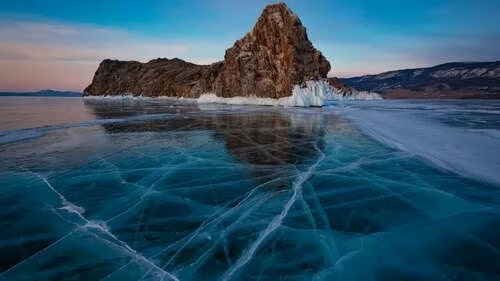
Russia
Russia comes in second with around 201,200 lakes. The vast territory of the country has a wide variety of lakes that include the renowned Lake Baikal which is the world’s deepest freshwater lake. These lakes are of prime importance to the ecology and climate of the country.
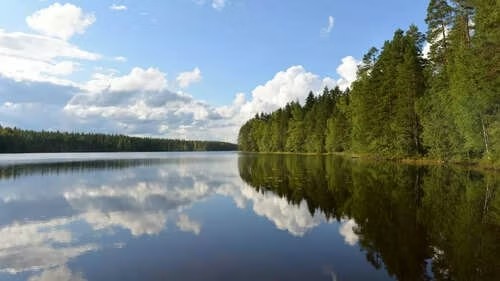
Finland
Finland, also referred to as “Land of a Thousand Lakes” has approximately 188,000 lakes. These lakes form a large part of the Finnish way of life and culture, providing sites for activities such as sauna bathing, ice swimming, and canoeing.
United States
The United States has around 102,500 lakes. Michigan alone contains more than 64,000 of them, giving it the largest number of lakes among the states. The Great Lakes – Superior, Michigan, Huron, Erie, and Ontario, are among the largest freshwater bodies in the United States.
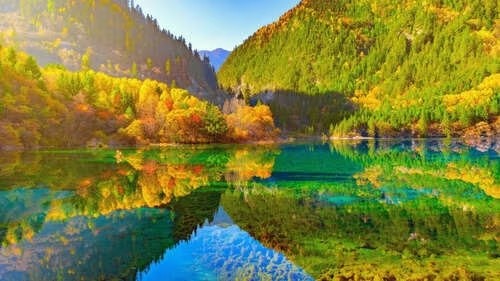
China
China consists of around 23,800 lakes. They have varying sizes and ecological significance, with some of the most important being Poyang Lake and Dongting Lake. They play crucial roles in agriculture, transportation, and biodiversity in the region.
Sweden
Sweden has around 22,600 lakes. Most of them are found in the south, formed by the glacial erosion during the Ice Age. They make up Sweden’s scenic landscapes and are highly favored for leisure activities.
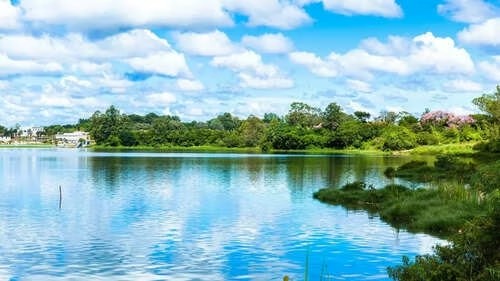
Brazil
Brazil has around 20,900 lakes, mostly found within the Amazon Basin. The lakes play an important role in the region’s ecosystem, maintaining a wide variety of wildlife and serving as flood buffers during rainy seasons.
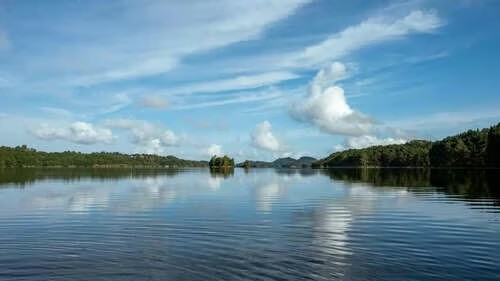
Norway
Norway is home to about 20,000 lakes. Most of these were formed by glacial erosion, contributing to the country’s rugged terrain and scenic landscapes. Lakes like Lake Mjøsa are central to Norway’s natural beauty and recreational activities.
These are the countries with the most number of lakes across the world. Lakes are not only breathtaking natural wonders and scenic beauty but also essential for maintaining – ecological balance, supporting biodiversity, and sustaining human life also. Protecting these water bodies is very important as they provide water to – drink, recreational spaces and habitats to various species.
Based on a 2016 study, the 8 countries with the most lakes of 0.1 square kilometers or larger are:
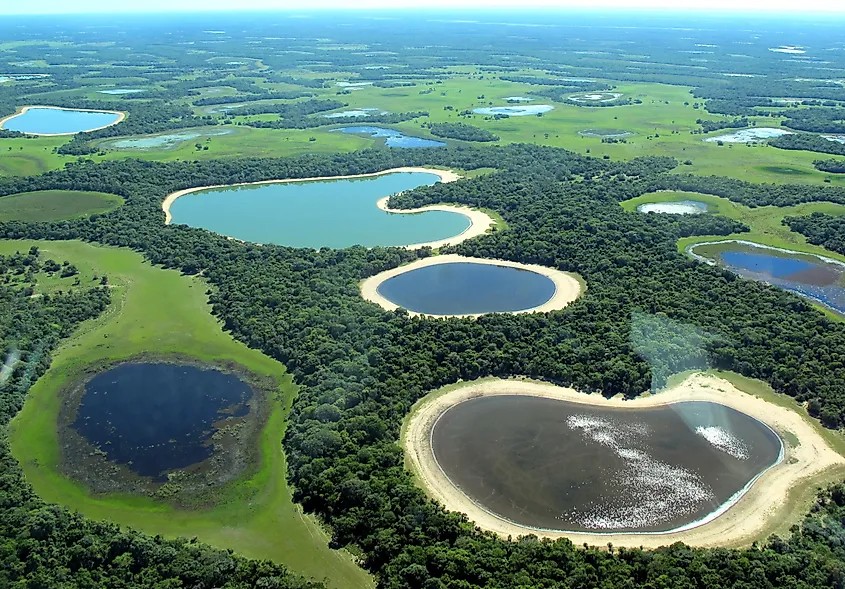
Which Country Has The Most Lakes In The World Most areas or countries with high lake densities are located in the northern parts of the Northern Hemisphere.
Of the 1.42 million lakes around the world with a size of over 0.1 sq. km, Canada is home to a whopping 62% of them.
Alaska has the most lakes in the United States, the country with the third highest number of lakes in the world.
Lakes play a vital role in influencing the weather patterns and ecology of an area. All the world’s lakes together (more than a million) also have a significant effect on the global climate. According to a scientific study, the total shoreline length of all the world’s lakes is four times longer than the total coastline length of the global ocean. Scientists are also worried that climate change will have a dire impact on the lakes of the world. In some places, lakes will dry up while in others, new lakes will be formed. Such changes might have adverse effects on the global climate. Hence, scientists feel that an inventory of the current status lakes of the world needs to be created to monitor the changes and study their impact on the environment around us. Counting the number of lakes present in different countries thus becomes important as well. Knowing their numbers will help in monitoring them more efficiently. So, geographers from McGill University, Canada, conducted a study on the lakes of the world and prepared a list of 10 countries with the largest number of lakes. Only lakes that are 0.1 sq. km (10 hectares) or larger were taken into account. Estimating the volume and age of water stored in global lakes using a geo-statistical approach Abstract
Lakes are key components of biogeochemical and ecological processes, thus knowledge about their distribution, volume and residence time is crucial in understanding their properties and interactions within the Earth system. However, global information is scarce and inconsistent across spatial scales and regions. Here we develop a geo-statistical model to estimate the volume of global lakes with a surface area of at least 10 ha based on the surrounding terrain information. Our spatially resolved database shows 1.42 million individual polygons of natural lakes with a total surface area of 2.67 × 106 km2 (1.8% of global land area), a total shoreline length of 7.2 × 106 km (about four times longer than the world’s ocean coastline) and a total volume of 181.9 × 103 km3 (0.8% of total global non-frozen terrestrial water stocks). We also compute mean and median hydraulic residence times for all lakes to be 1,834 days and 456 days, respectively. Introduction
The role of lakes in the global hydrological and biogeochemical cycles is intimately tied to their geometric characteristics of surface area, depth, stored water volume and shoreline length. In addition, the rate of water flowing into and out of lakes depends on their location within the river network, which then defines their hydraulic residence (or turnover) time, that is, the average time that water spends in a lake. Spatially explicit knowledge of all these parameters is crucial for understanding and modelling a wide variety of Earth system processes and interactions with the environment, including hydrological budgets1; carbon or methane exchange rates2; sediment trapping3; heat fluxes and coupled weather and climate effects4; dissolved silica retention5; the cycling of pollutants and nutrients6; as well as associated ecological processes such as lake productivity7; species richness8; food chain dynamics9; and inland fishery yields10.
In the absence of globally consistent data describing the multitude of lake parameters, statistical models have been developed that use readily available lake characteristics such as surface area or perimeter as proxies for interpolating large-scale processes11, yet these simplifications pose critical limitations. For instance, despite recent efforts to revise global carbon models, most estimates of fluxes in and out of inland waters default to multiplying an average flux by the total surface area of lakes in a region12 resulting in wide confidence intervals and high uncertainties.
Data on the volume and depth of lakes on a global scale are scarce and inconsistent. Previous estimates of the total global volume of water contained in lakes ranged from 166 to 275 × 103 km3 (refs 13, 14, 15, 16), with more recent figures converging to 176–180 × 103 km3 (refs 17, 18, 19). However, these estimates are not spatially explicit, are based on incomplete data sets of lake distribution or use simple extrapolation methods that rely on a limited set of variables. Moreover, our attention typically focuses on large lakes, resulting in the oversight of small lentic water bodies when analysing continental- to global-scale systems. Various authors showed the importance of small lakes for processes ranging from evaporation to sediment trapping, greenhouse gas emissions, catchment interactions, lake mixing, diagenetic reactions or aquatic habitat conservation20,21,22,23. In particular, while large lakes might dominate processes driven by volume or surface area due to their prevalence at a global scale, small lakes contribute more to the total aquatic–terrestrial interface than large lakes24. It remains inconclusive how different size classes might relate in terms of residence time.
The gap in explicit lake volume data is largely due to the fact that our ability to produce bathymetric maps from limnological surveys is severely constrained by a combination of both technical and operational challenges and the sheer amount of water bodies on Earth. Despite increasingly precise and accurate geo-positioning technologies, satellite imagery and computational cartography25, the bathymetric map creation process through acoustic profiling and interpolation remains a time- and cost-intensive method, as it requires extensive field work by qualified technicians followed by lengthy data analyses. Furthermore, while optical remote sensing methods have been widely used for bathymetric mapping of coastal benthic habitats for several decades26 these techniques are still limited to shallow environments and favourable water conditions27.
In this article, we use a literature review in combination with a novel geo-statistical model to produce a consistent estimate of lake volumes at the global scale for virtually all lakes with a surface area of at least 10 ha (0.10 km2). The main assumption of this model is that the land surface topography surrounding a given lake can be used as a predictor of lake bathymetry. The model is trained and validated on 12,150 existing records of lake depth and then applied to a new global data set—termed HydroLAKES—that was compiled as part of this project and contains the shoreline polygons of 1.43 million individual lakes and reservoirs. Hydraulic residence time, that is, the average age of lake water, is estimated for each lake using discharge estimates derived from a global hydrological model at high spatial resolution. It should be noted that throughout this article, every effort is made to distinguish ‘natural lakes’ from ‘human-made reservoirs’; yet the general term ‘lake’ is used in all instances where this distinction is considered non-critical.
Results
Global lake abundance and characteristics
HydroLAKES distinguishes 1.43 million individual polygons of natural lakes and human-made reservoirs with a surface area of at least 10 ha. Natural lakes cover a total of 2.67 × 106 km2 or 1.8% of global land area (Table 1), while large human-made reservoirs (that is, all reservoir polygons ≥10 ha from the Global Reservoir and Dam database28) add another 0.26 × 106 km2 or 0.2% of global land area.The shoreline length of all natural lake polygons combined stretches for a total of 7.2 × 106 km, plus another 0.5 × 106 km for large reservoirs. Given the observation that shoreline length is dominated by smaller lake size classes (Table 1; also confirmed by Winslow et al.24) we assume that these estimates are significantly underestimating global shoreline length as lakes below 10 ha are not included. Also, our results depend on map scale (in the case of HydroLAKES 1:100,000 and coarser; see Methods) that defines how finely the shorelines are resolved, and it has been observed that a doubling of measurement resolution will cause shoreline length to increase by 15% (ref. 24). In comparison, the global ocean coastline length has been calculated to measure 1.6 × 106 km at a consistent map scale of 1:250,000 (ref. 29). Thus, the shoreline length of lakes and reservoirs ≥10 ha is estimated to be roughly four times longer than the global ocean shoreline, even if scaling effects are accounted for.
According to our study, all natural lakes of at least 10 ha in size contain a total of 181.9 × 103 km3 of water, representing 0.8% of total global non-frozen terrestrial water stocks, which is equivalent to 1.7% of all the predominantly fresh groundwater on Earth19. When large human-made reservoirs are added, the storage volume increases to 187.9 × 103 km3. Of this combined amount, 40.2% is contained in the Caspian Sea and another 33.2% in the next four largest lakes, while total reservoir storage represents 3.2% (Fig. 1 and Table 1). If spread over the world’s landmass, the total water volume would form a layer ∼1.26 m in depth, representing 1.7 times the amount of precipitation over land each year30. While the mean depth of all lakes, computed as the sum of lake depths divided by the total number of lakes, is only 3.9 m due to the high number of small lakes, the global area-weighted mean depth, calculated as the total volume divided by the total area of all lakes and reservoirs, is estimated to be 64.2 m. Grouping all natural lakes into bins using logarithmic area and volume size classes (Table 1 and Fig. 2a, respectively) shows that the largest lakes contribute the most to global lake volume. In contrast, no clear size pattern emerges for the contribution to total surface area.
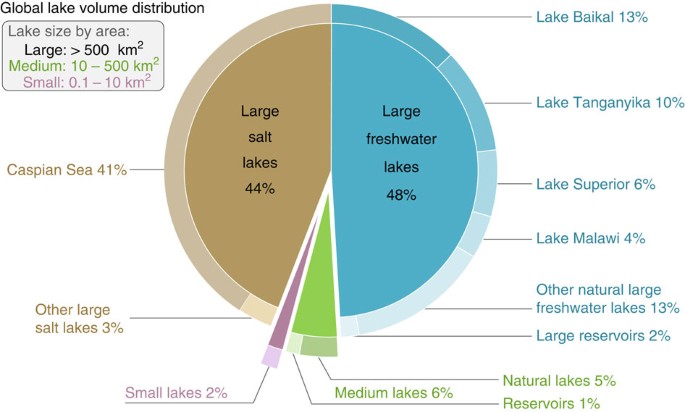
Figure 2: Distribution of global lakes sizes and hydraulic residence times.

(a) Total volume of natural lakes in km3 and surface area in km2 across volume size classes by continent and for the world. (b) The frequency distribution of hydraulic residence times by continent and for the world. Colour legend in a refers to both panels. For definition of continents see Table 1. Note that Europe includes the Caspian Sea and Lake Baikal, the two most voluminous lakes on Earth.
As has been proposed in the literature28,31, we observe a roughly 10-fold increase in the number of natural lakes from one logarithmic size class (using surface area) to the next smaller one, confirming that the global distribution of natural lakes and their sizes is scale-invariant down to at least 0.1 km2 for surface area, and can be approximated with a Pareto distribution model (Fig. 3). Using this model to extrapolate the next smaller size class of lakes, we estimate that there are 21.2 million natural lakes with a surface area of at least 0.01 km2 (1 ha), representing a total of 3.23 × 106 km2 or 2.2% of global land area. Similarly, we extrapolate that there are 25.4 million natural lakes with a volume of at least 0.00001, km3 (the equivalent of a lake with an area of 0.01 km2 and a depth of 1 m), storing a total water volume of 182.9 × 103 km3.
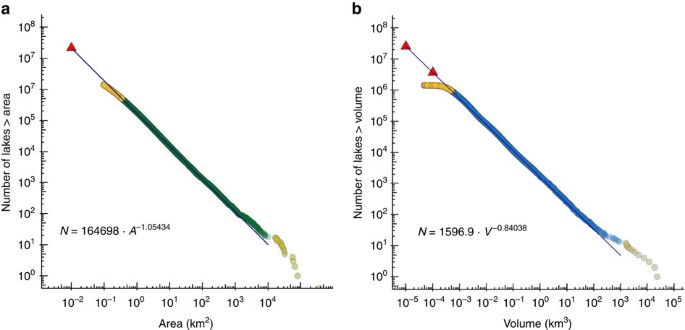
In terms of regional distribution, areas with high lake densities are nearly all encompassed within the extent of the last glacial maximum in Northern Canada and Scandinavia as well as in some areas of Alaska and Russia (Fig. 4a), with some smaller hotspots found in the alpine zones of the Andes, Rockies and Himalayas. Divergent plate boundaries with deep tectonic lakes such as observed in the African Rift Valley, as well as large floodplains such as in the Amazon Basin or in coastal China are also places where lakes are prominent features of the landscape. The global distribution of lake volume (not shown) follows the same general trends as lake area, though alpine zones and rift valleys with deep lakes tend to hold more water than areas where shallower lakes were formed by continental glaciers (for example, on the Canadian Shield) or by fluviatile processes (see lake depth distribution on Fig. 4b).
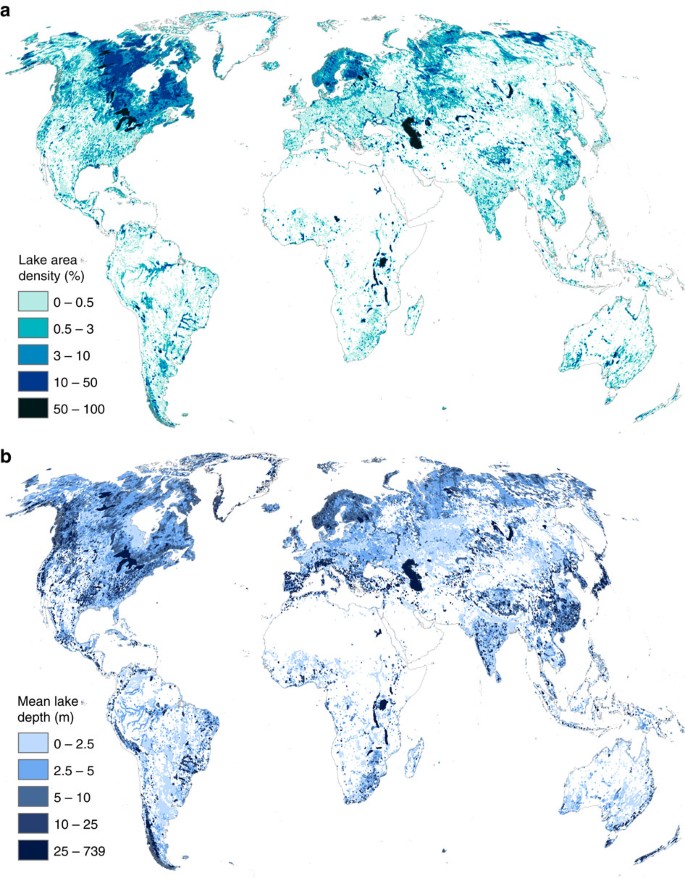
Hydraulic residence times
The mean lake residence time computed for all natural lakes with a surface area of at least 10 ha, calculated as the sum of individual lake residence times divided by the total number of lakes, is 1,834 days (about 5.0 years), while the median is 456 days. The discrepancy between these statistics stems from the skewed frequency distribution of residence times, which is dominated by smaller lakes with residence times below the average (Fig. 2b). Some lakes show much longer residence times; this generally applies to large lakes located in areas with little discharge or small catchment areas such as Lake Baikal with an estimated residence time of 375 years (reported as 321 years32). Others display very short residence times; this may indicate lakes situated within a larger river channel that are flushed rather rapidly by river discharge; but may also include some errors due to incorrect co-registration of lake outfalls to the river network in our model (such as small oxbow lakes being assigned to the main-stem river).
Overall, we find a trend of shorter residence times for smaller lakes and longer residence times for larger lakes, yet there is significant scatter among this result, and long residence times can occur throughout the entire lake size spectrum. Finally, the average age of all lake water, calculated as the volume-weighted average of all residence times, is 255 years. This estimate, however, is strongly dominated by the influence of the most voluminous lakes (Table 1).
Discussion
This study investigated the relationship between lake geometry, surrounding landscape characteristics and lake bathymetry. Our geo-statistical model confirmed earlier studies in that, beyond lake surface area, the variables with the most predictive power are based on expressions of the variation in elevation around the lakes. We found that the depth of lakes is generally best reflected by the slope of their immediate surroundings (that is, within 100 m of the shoreline), which is in agreement with earlier studies, such as that of Sobek et al.33 who used a similar approach based on the maximum slope within 50 m of the shoreline. Despite its larger extent, the statistical performance of our global model is comparable to that of regional studies, including a recent model developed for 55,000 lakes in Quebec, Canada34 (see Methods for more model comparisons).
The limited amount of globally consistent data on the geological age of the landscape and the various morphological processes involved in shaping lakes constrained the ability of our model to differentiate between different lake types. This lack of data places an inherent limit on the degree of variance in lake depths that can be explained. There is an exceptional diversity of lakes in terms of formation processes, including fluvial, aeolian, landslide or volcanic origins, which highly influence their morphometry35,36. Ideally, each of these types should be treated by customized sub-models. Furthermore, different bathymetry may be due to differential rates of sedimentation, which in turn depend on variations in geology, climate and vegetation in the associated upstream catchment.
As with any model, errors in the underpinning data sets represent a substantial source of uncertainty (Supplementary Discussion). Accordingly, identifying whether the over- and underestimations found in the model predictions are due to reference data errors or modelling errors is an arduous task. Given the uncertainties, we caution from interpreting volume estimates for single lakes, as individual errors can be very large. Rather, our results are designed for use in regional to global scale studies, where errors are reduced due to data aggregation. We believe that progress in the resolution and accuracy of elevation data set holds promise for the improvement of future global lake depth estimates.
Previous estimates of the number and total surface area of lakes have varied widely (Fig. 5 and Supplementary Table 1), with total surface area ranging from about 2 to 5 million km2. Some of this variation can be attributed to different definitions and inclusion or exclusion of certain lake sizes or types (for example, fresh versus saline or permanent versus intermittent). Our new estimate of 2.67 × 106 km2 for 1.42 million natural lakes ≥10 ha, and 3.23 × 106 km2 for 21.2 million natural lakes ≥1 ha, respectively, are generally exceeding older estimates indicating the comprehensiveness of HydroLAKES. At the same time our results stay below some higher estimates of the past decade31,37, which we believe is due to our enhanced ability to differentiate natural lakes from reservoirs, as well as variations in the statistical extrapolation of smaller lakes.
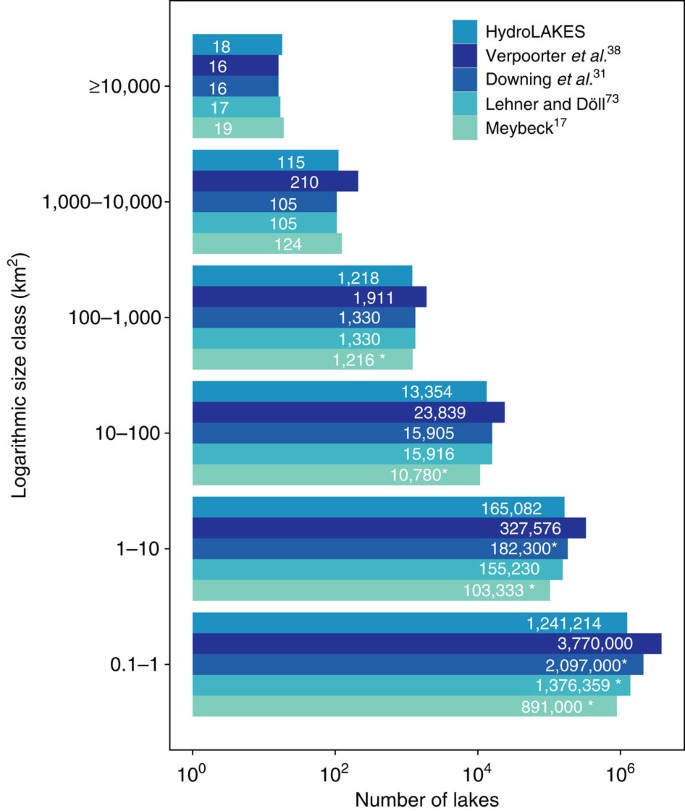
According to the study, the 10 countries with the most lakes in the world are:
- Canada – 879,800
- Russia – 201,200
- USA – 102,500
- China – 23,800
- Sweden – 22,600
- Brazil – 20,900
- Norway – 20,000
- Argentina – 13,600
- Kazakhstan – 12,400
- Australia – 11,400
Where Are The World’s Lakes Concentrated?
The study showed that most of the areas or countries with high lake densities are located in the northern parts of the Northern Hemisphere like Northern Canada, Scandinavia, Russia and Alaska. These areas were covered in massive ice sheets during the last Ice Age. The retreat of glaciers at the end of the Ice Age left behind hundreds of thousands of lakes that we see today.
Lakes are also concentrated in the alpine areas of the Himalayas, Rockies, and Andes mountains. Here glacial action and tectonic shifts lead to lake formations. Large floodplains of rivers like the Amazon River in Brazil and the coastal rivers of China also result in numerous lakes. Divergent plate boundaries like that in the African Rift Valley hosts deep lakes in significant densities as well.
Canada, The Country With The Most Lakes
According to the study, Canada is home to the largest number of lakes in the world. Of the 1.42 million lakes around the world with a size of over 0.1 sq. km, Canada is home to a whopping 62% of them. These lakes play a very significant role in shaping the water cycle of the country. However, very little is known about most of these lakes. According to the researchers of the study, lakes in Canada’s north could be severely affected by the fast-melting glaciers due to global warming. Old lakes might drain out and new ones form. Hence, studying these lakes in detail becomes necessary.
The US States With Most Lakes
It is no surprise that most of the US states with the greatest number of lakes are found in the northern part of the country. It is the part that has experienced the most active glacial movement in the recent past. Alaska has the most lakes in the country but many of its lakes remain unnamed. Minnesota, however, has the most named lakes in the country.
The Case Of Finland – “The Land Of A Thousand Lakes”
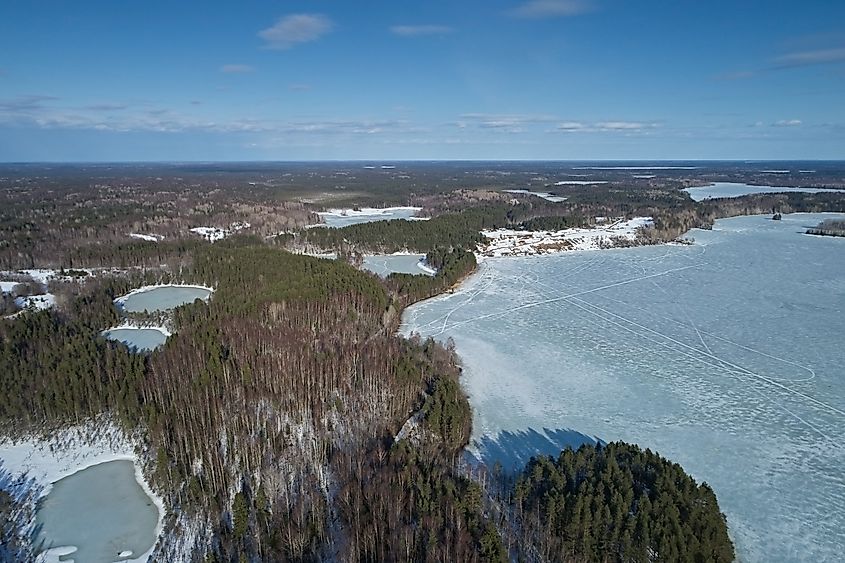
As per the study, Finland does not feature on the list of top 10 countries with the most lakes. However, there are many articles stating that Finland has 187,888 lakes and that makes it the country with the most lakes in relation to the size of the country. In fact, it is estimated that Finland has one lake for every 26 persons. While this fact might be right to a certain extent, it must be remembered that the definition of a lake varies widely from place to place. There is no standard unambiguous definition of the size requirements for a water body to be classified as a lake.
Finland’s 187,888 lakes include all water bodies larger than 500 sq. m or just a little larger than the size of a basketball court. However, the list in the study was prepared by taking into account only lakes that are over 0.1 sq. km or 100,000 sq. m in size which is the size of about 18.5 football fields. Hence, Finland failed to feature on this list.
Which country has the most lakes?
| Rank | Country | Number of lakessize > or = 0.1 sq. km |
|---|---|---|
| 1 | Canada | 879,800 |
| 2 | Russia | 201,200 |
| 3 | USA | 102,500 |
| 4 | China | 23,800 |
| 5 | Sweden | 22,600 |
| 6 | Brazil | 20,900 |
| 7 | Norway | 20,000 |
| 8 | Argentina | 13,600 |
| 9 | Kazakhstan | 12,400 |
| 10 | Australia | 11,400 |
Lovely just what I was searching for.
Hello folks!
I came across a 143 awesome tool that I think you should browse.
This tool is packed with a lot of useful information that you might find interesting.
It has everything you could possibly need, so be sure to give it a visit!
https://www.actionlifemedia.com/finance/the-banking-options-and-transparency-in-the-sphere-of-online-betting/?fbclid=IwAR10LgQkX7IoiEUvEx0tY3Xto4lA7CZGJqa7hWHr7aqZ2vwLxrXgTxPFU0E
Furthermore remember not to overlook, everyone, which you always can within the article find responses for your the absolute tangled inquiries. Our team tried to explain all information using an most easy-to-grasp manner.